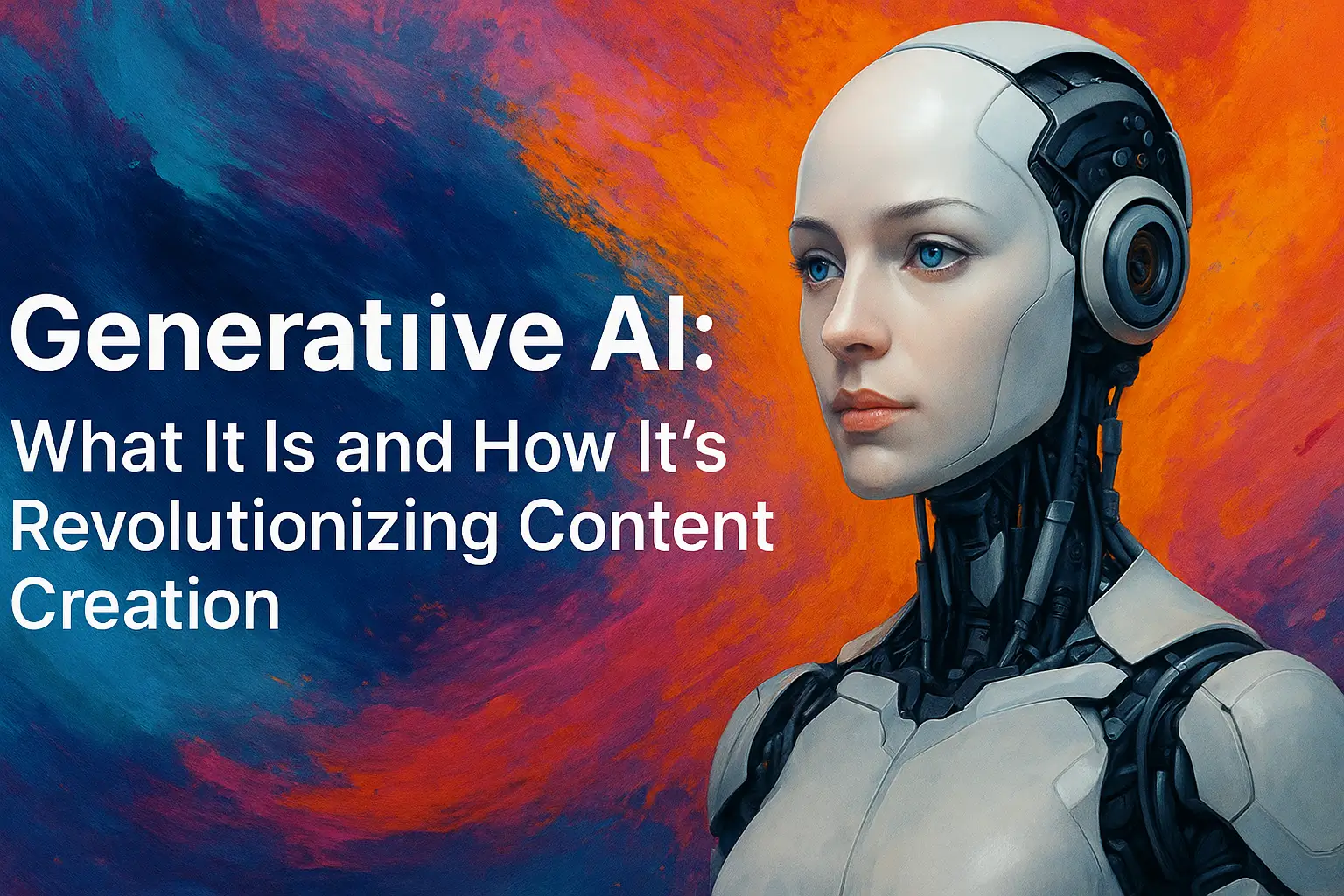In recent years, one of the most exciting advancements in Artificial Intelligence has been the rise of Generative AI—a category of AI that doesn’t just analyze information but creates entirely new content. From writing articles to generating images, music, and videos, Generative AI is transforming how we produce and consume content across industries.
In this guide, we’ll explain what Generative AI is, how it works, and why it’s considered a game-changer in the world of content creation.
What Is Generative AI?
Generative AI refers to artificial intelligence systems that can create new data based on patterns learned from existing data. Unlike traditional AI, which classifies or predicts based on inputs, Generative AI produces original outputs—such as text, images, or audio.
Popular Types of Generative AI:
- Text generation: Tools like ChatGPT and Claude
- Image generation: Platforms like DALL·E and Midjourney
- Music composition: AI systems like AIVA or Amper Music
- Video creation: Tools like Runway and Synthesia
- Code generation: GitHub Copilot, Amazon CodeWhisperer
Generative AI models are trained using massive datasets, and through deep learning (often with neural networks), they learn to mimic human-like creativity.
How Generative AI Works
At the core of most Generative AI tools are transformer models and Generative Adversarial Networks (GANs):
1. Transformer Models (e.g., GPT)
These models use attention mechanisms to understand the context of input data and generate coherent and contextually appropriate responses or outputs.
2. GANs
Generative Adversarial Networks consist of two neural networks: a generator that creates content and a discriminator that evaluates it. The two work together, improving output quality through competition.
Key Use Cases of Generative AI in Content Creation
1. Blogging and Article Writing
Tools like ChatGPT or Jasper help writers:
- Generate article drafts
- Create outlines and SEO meta descriptions
- Brainstorm ideas or titles
- Rewrite or improve existing content
2. Graphic Design and Digital Art
AI image generators like Midjourney or DALL·E allow creators to:
- Design concept art
- Create book covers or posters
- Produce unique illustrations for websites or social media
3. Video Production
With tools like Synthesia or Pictory, you can:
- Turn scripts into narrated videos
- Create avatar-based presentations
- Generate visual content without filming or editing
4. Social Media Marketing
Generative AI can create engaging captions, hashtags, ad copy, and even personalized content for different platforms in minutes.
5. Music and Sound Design
AI tools now compose background music, soundscapes, or even full tracks tailored to moods or genres, ideal for creators and marketers.
6. Code Writing
AI coding assistants help developers:
- Generate code snippets
- Detect bugs
- Convert natural language descriptions into functional code
Advantages of Generative AI
- Speed: Content that once took hours or days can now be generated in minutes.
- Scalability: Great for agencies or creators producing high volumes of content.
- Cost Savings: Reduces the need for large teams of writers, designers, or editors.
- Creative Expansion: Offers endless ideas and variations, acting as a collaborative assistant.
Potential Risks and Challenges
As with any powerful technology, Generative AI comes with challenges:
- Plagiarism: Some outputs may closely resemble existing works.
- Bias and Misinformation: AI models can replicate biases found in training data.
- Quality Control: Not all generated content is accurate or contextually appropriate.
- Ethical Concerns: Misuse for fake news, deepfakes, or impersonation is a growing threat.
- Loss of Human Touch: Over-reliance on AI may lead to generic or impersonal content.
Tips for Using Generative AI Responsibly
- Edit and Review: Always review and refine AI-generated content.
- Add Human Insight: Use AI as a tool, not a replacement for creativity or judgment.
- Disclose Use of AI (when appropriate): Especially in journalism, academia, and professional contexts.
- Respect Copyrights: Avoid prompts or uses that copy known artworks or texts.
- Train with Caution: If building your own models, ensure datasets are diverse and unbiased.
What’s Next for Generative AI?
The future of Generative AI includes:
- Multimodal systems: Tools that combine text, image, audio, and video generation.
- Real-time content creation: Instant content for games, learning platforms, or media.
- More accessible tools: Platforms that simplify complex AI for general users.
- Greater personalization: AI that adapts content to individual preferences or brand voice.
Final Thoughts: Embrace the Evolution
Generative AI isn’t just a passing trend—it’s reshaping the creative landscape. Writers, artists, marketers, and developers now have unprecedented tools at their fingertips, enabling rapid innovation and experimentation.
When used thoughtfully and ethically, Generative AI empowers creators to do more, faster—and opens the door to a new era of content creation where human imagination and machine intelligence work hand in hand.
